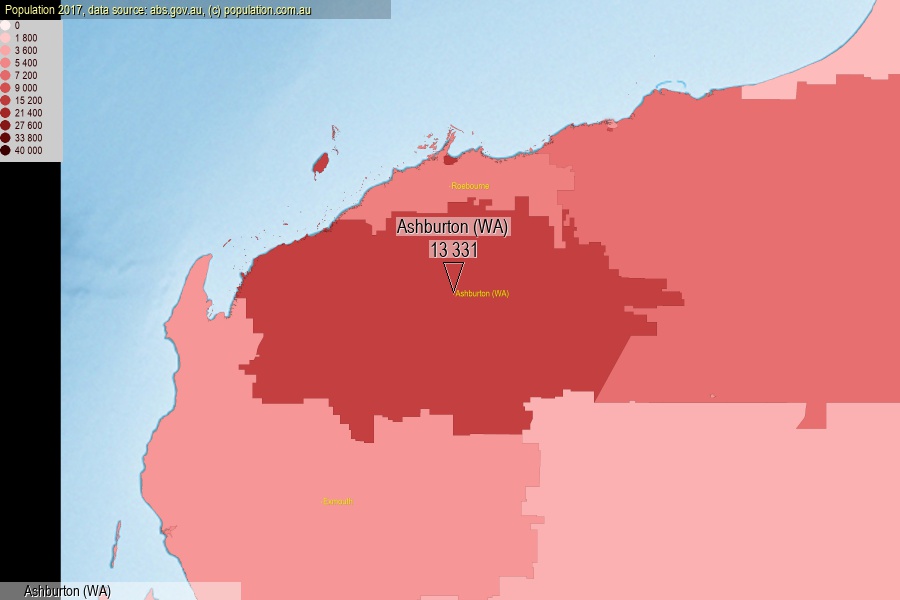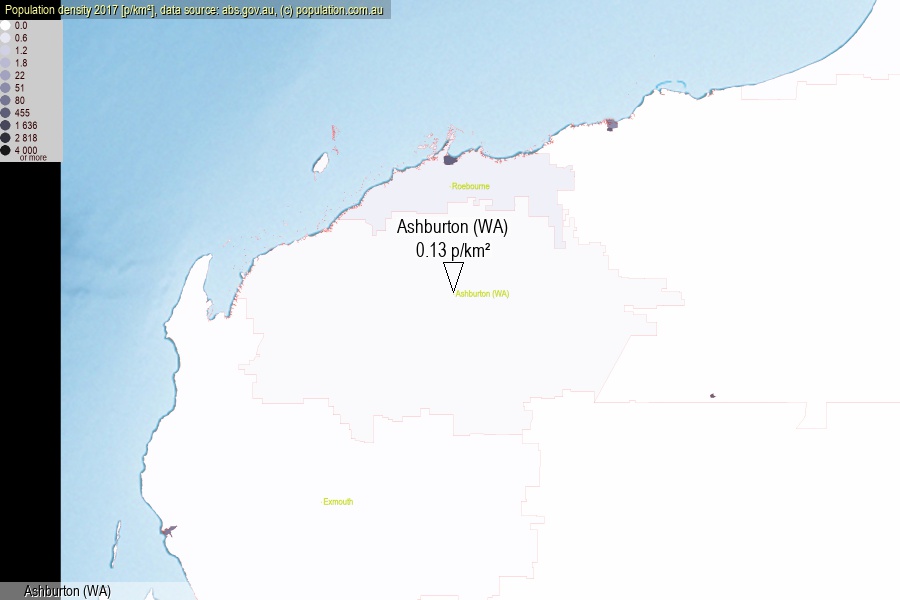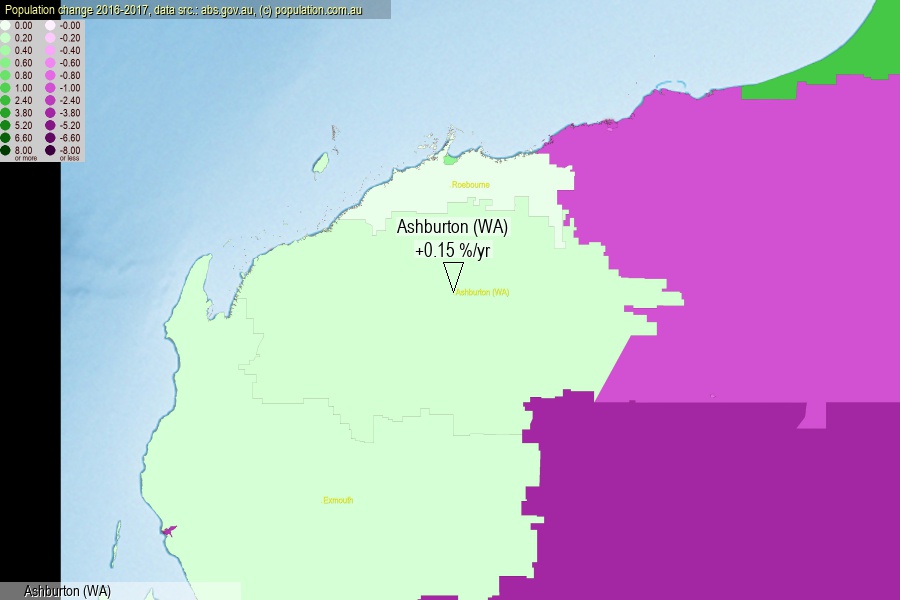 population.com.au
population.com.auLast official estimated population of Ashburton (WA) (as Statistical Area Level 2) was 13 331 people (on 2017-06-30)[2]. This was 0.05% of total Australian population and 0.514% of WA population. Area of Ashburton (WA) is 100 827.00 km², in this year population density was 0.13 p/km² . If population growth rate would be same as in period 2016-2017 (+0.15%/yr), Ashburton (WA) population in 2025 would be 13 492. [0]



Click to enlarge. Ashburton (WA) is located in the center of the images.
Population [people], population density [p./km²] and population change [%/year] [2]
View borders » (new window) [4]
[2001-2002] +2.83 %/Yr.
[2002-2003] +5.36 %/Yr.
[2003-2004] +7.08 %/Yr.
[2004-2005] +4.88 %/Yr.
[2005-2006] +4.75 %/Yr.
[2006-2007] +4.35 %/Yr.
[2007-2008] +6.81 %/Yr.
[2008-2009] +6.18 %/Yr.
[2009-2010] +5.62 %/Yr.
[2010-2011] +7.54 %/Yr.
[2011-2012] +9.46 %/Yr.
[2012-2013] +7.42 %/Yr.
[2013-2014] +4.07 %/Yr.
[2014-2015] +3.89 %/Yr.
[2015-2016] +2.38 %/Yr.
[2016-2017] +0.15 %/Yr.
[0] Calculated with linear interpolation from officially estimated population
[1] Read more about SA2 and Australian Statistical Geography Standard (ASGS) on abs.gov.au
[2] Population data from Australian Bureau of Statistics (Population and density: 2017; change: 2016-2017)
[3] Digital Boundaries: Australian Statistical Geography Standard (ASGS) 2016.
[4] Border coordinates are simplifyed using Ramer-Douglas-Peucker algorithm.